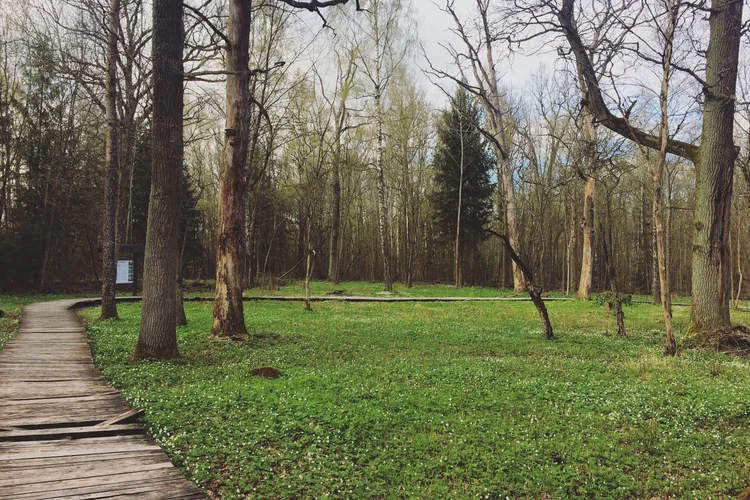Historic Trail: a Day Trip from Vilnius to Kernavė
Just 35 km northwest of Vilnius lies a natural gem that’s somewhat easily missed but definitely worth discovering. The small town of Kernavė, the first capital of the Grand Duchy of Lithuania, was first mentioned in 1279, but people had lived in the valley by the Neris River since the 9th century BCE.
Today, the landscape formed by retreating glaciers is a wonderful sight of impressive hill forts, settlements, burial sites, and other monuments. A couple of hours outdoors overlooking the meadows and the river, breathing in the fresh air, and being able to touch history will clear your mind and recharge your spirit.
Explore a UNESCO World Heritage Site
The Cultural Reserve of Kernavė is included on the UNESCO World Heritage list for its authentic beauty and the exceptional historical value it preserves from the Palaeolithic era. The 15 archaeological sites and three historical monuments are on a territory covering 196.2 hectares, and the five impressive Kernavė Hills make up one of the largest archaeological outdoor expositions.
Feel free to climb the stairs to the top and try to imagine what it was like hundreds of years ago.
Breathe in Ancient History
Enter the archaeological open-air museum and travel back in time – homesteads with workshops and animal sheds are reconstructed and look like they’re taken straight from the 14th century.
Even though archaeologists have been working at Kernavė for over twenty years, only 2% of the cultural reserve territory has been researched. But Kernavė has been called the Troy of Lithuania, as it preserved most of the relics intact.
The oldest hard surface road found in Lithuania shows that Kernavė played an important role in trade relations with the Roman Empire, proven by a silver denarius of Marcus Aurelius dating from 161.
Explore the Artefacts
Get acquainted with prehistoric times and the Middle Ages of Kernavė. It’s easy to imagine life in the prehistoric habitat, the thriving craft period and the golden age of the Grand Duchy of Lithuania while exploring the authentic exhibits and archaeological finds.
If you have more time, enrol in the educational programme offered by the museum. The Museum of the Archaeological Site of Kernavė and the Kernavė Open-air Museum are closed on Mondays, Tuesdays and national holidays.
Enjoy a Medieval Feast
For a special treat, visit Kernavė between July 5 and 7. The Live Archaeology Days in Kernavė, an experimental archaeology festival dedicated to the Kernavė name mentioned 740 years ago, will give you a chance to experience authentic ancient Baltic traditions, crafts, and food. You can even try your hand at making something out of clay or stone.
Walk in the Largest Oak Woods
On the way to Kernavė stop by the Dūkštai oak woods, the largest and one of the oldest natural oak forests in Lithuania. You will learn more about the pagan Lithuanian religion and get a glimpse of the 38 wooden sculptures.
The 200-year-old oak forest is home to many rare animal and plant species. Plus, July is the perfect time to spot the rare purple Lithuanian orchids.
Climb the Karmazinai Hill-Fort
On the other side of Dūkštai oak forest lies the Karmazinai Mound, which offers a beautiful view of the Neris Valley, where there was once a pagan place of worship. Take a walk in the area and discover 130 burial mounds; three of them were reconstructed after archaeological excavations had been carried out there.
Getting to Kernavė
By car: take the A1 or A2 motorway from Vilnius and then either road 108 or 116.
By bus: from the Vilnius Bus Station, platforms No. 10 or 11. Check the timetable here. Buses to Kernavė run about six times per day.







